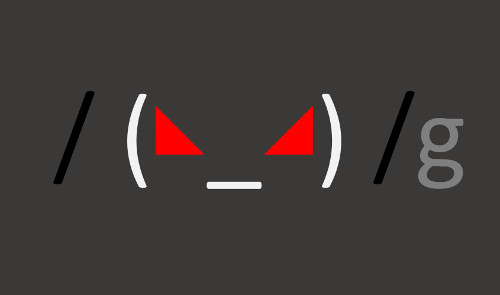
Nathan Friend
Remote Software Engineer at Stripe and cellist based out of Ontario. Previously at GitLab. Fascinated with building usable, delightful software.
Beware The Regex Pointer
December 13, 2012 | 3 minutes to read

Those familiar with JavaScript regular expressions will remember that a variety of modifiers can be appended to the end of an object’s declaration to make the expression behave in different ways. For example:
var pattern = /(your pattern here)/i;
will match the given pattern in a case insensitive way. One of these modifiers is the g modifier - it tells the object to perform a global search when matching the pattern. When the string.match(pattern) method is called, an array of every match in the string is returned (as opposed to just the first match, as is the case when the modifier is omitted). However, this modifier has a tricky catch that is not immediately apparent. If the .test() method is called on a regex object created with the g modifier, some strange results can be produced. Take this example:
var str = "Mississippi";
var pattern = /iss/g;
alert(str.test(pattern));
alert(str.test(pattern));
alert(str.test(pattern));
The first two executions of the .test() method return true, as expected. The third time around, however, this method returns false.
Why the seemingly inconsistent behavior? Each JavaScript regex object contains an internal pointer that indicates at what index in the string the object should begin its search. When the .test() method successfully finds a match, it moves that pointer to the index of the character directly after the successful match. The next time .test() is called, the string is searched again starting at this index. If no match is found, the pointer is returned to the beginning of the string. This is probably not the desired behavior when using .test(); in most cases it is best to simply remove the g modifier.

Really strange results start cropping up when the same regex object is used to test multiple strings:
var str1 = "Mississippi";
var str2 = "Kiss me, baby.";
var pattern = /iss/g;
alert(str1.test(pattern));
alert(str2.test(pattern));
The first test of str1 against pattern will return true, as expected. The second test on str2 will fail since the internal pointer is no longer set to start at the beginning of its input string; the pointer is now set to 4 since the last successful match was found at indices 0 through 3. One way to mitigate this pitfall is to manually reset the pointer by explicitly setting the object’s lastIndex property to 0 between each test. The following code returns true for both tests:
var str1 = "Mississippi";
var str2 = "Kiss me, baby.";
var pattern = /iss/g;
alert(str1.test(pattern));
//reset the lastIndex property from 4 (the index of
//the next character after the last successful match) to 0
pattern.lastIndex = 0;
alert(str2.test(pattern));
Other posts you may enjoy:
Useful things I've 3D printed
November 25, 2024 | 11 minutes to read
GitLab Pages with multiple domains
October 14, 2024 | 3 minutes to read
Zoom light
May 31, 2024 | 6 minutes to read
I built a weird keyboard
June 26, 2023 | 14 minutes to read
Wordle Bot
January 25, 2022 | 6 minutes to read